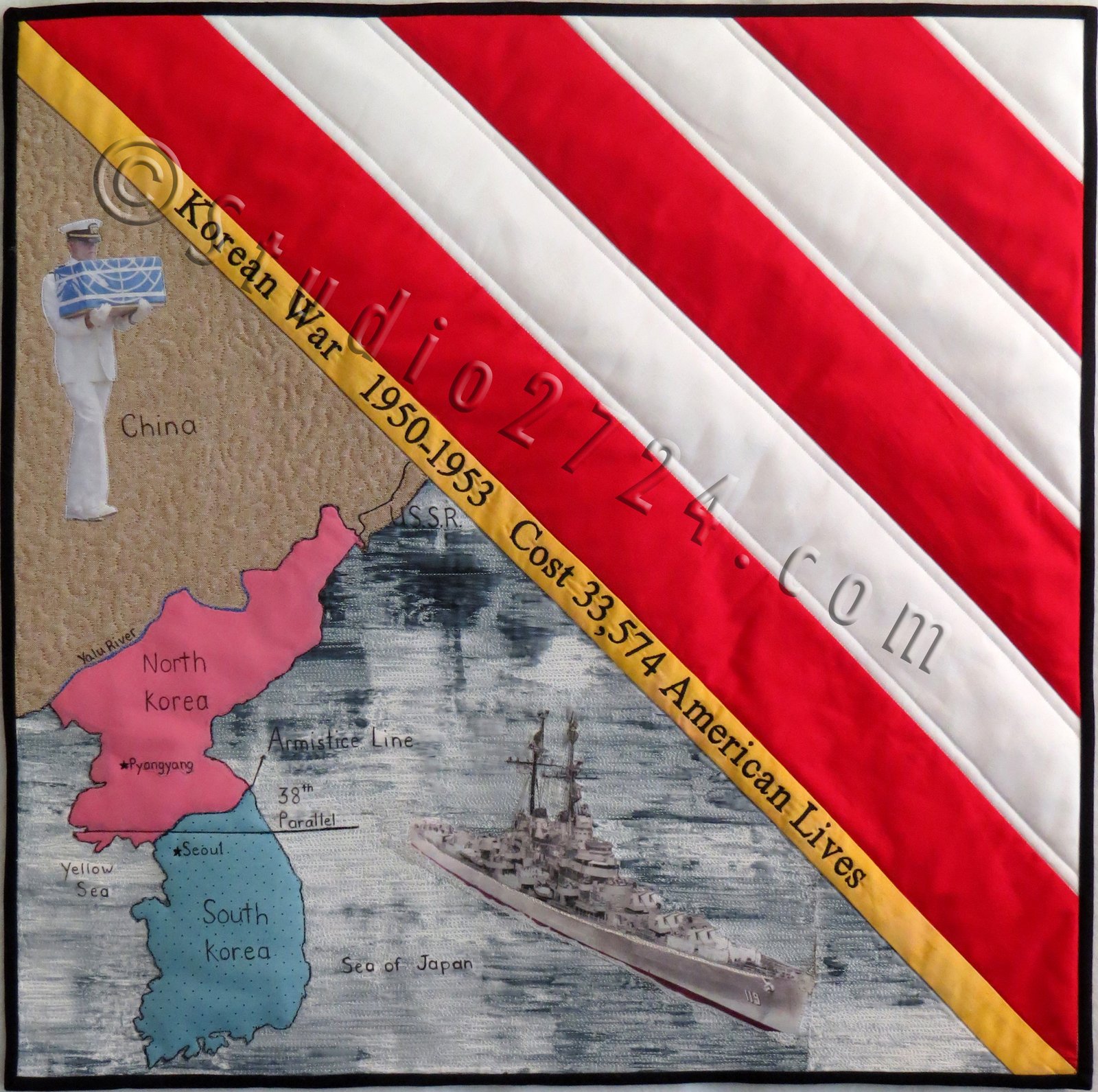A Frozen Conflict
History
In 1910, Japan put Korea under Japanese rule. The Japanese were still ruling Korea when WWII ended. When Japan surrendered in 1945, the United States and the U.S.S.R, agreed to split Korea into two temporary occupation zones with the U.S.S.R. occupying the socialist state of the North and the U.S.A. occupying the anti-communist capitalist state of the South. The 38th parallel was the boundary between the two zones.
When the United States withdrew the last remaining combat troops from South Korea, North Korea saw opportunity and their KPA forces attacked South Korean ROKA forces at the 38th parallel, and in so doing, initiated the Korean War on June 25th, 1950. The United Nations dispatched forces from over 20 countries to repel the North Korean invasion, but the USA provided 90 percent of the support in defense of South Korea. It is worth noting that the United States never formally declared war, but conducted operations under the auspices of the United Nations.
On October 19th, 1950, Chinese PVA (People’s Volunteer Army) crossed the Yalu River and entered the war. Battles raged back and forth across the 38th parallel. South Korea’s capital, Seoul, changed hands four times and the last two years of ground battles became a war of attrition. For the first time in history, war included air-to-air combat and Soviet pilots covertly flew in defense of their communist allies.
Because neither North nor South Korea had significant navies, the war had few naval battles. Early on, U.N. naval forces successfully fought and sank North Korean torpedo boats, mortar gunboats, and supply and ammunition ships denying the North Koreans the ability to resupply from the sea. When war broke out, the USS Juneau (CL-119) was one of the few ships immediately available to patrol south of the 38th parallel in the Sea of Japan (East Sea). On July 2nd, she became the first U.S. Navy Cruiser to see combat. She sank three enemy torpedo boats and supported raiding parties along the coast. After those initial actions, vessels from U.N. nations held undisputed control of the seas around Korea. Gunships continued to bombard the shore and aircraft carriers continued to provide air support to the U.N. ground forces. The main threat to U.N. navy ships were magnetic mines and gunfire from the North Korean coastal artillery.
The fighting ended on July 27th, 1953, when the Korean Armistice Agreement was signed in Panmunjom, creating the DMZ (Korean Demilitarized Zone) separating North and South Korea. Many, but not all, prisoners were returned to their respective countries, but no peace treaty was signed. At this time, the two Koreas are still at war, engaged in a frozen conflict.
In the Korean War, preserving the cause of freedom cost 33,574 American lives.
On July 27th, 1995, on the 42nd anniversary of the armistice that ended conflict, the U.S. Korean War Veterans Memorial was dedicated, memorializing those who served in the Korean War.
The memorial is in the form of a triangle intersecting a circle containing a shallow Pool of Remembrance. On a highly polished Mural Wall are sandblasted images depicting soldiers, equipment, and people involved in the war. Within the triangle are nineteen larger-than-life stainless steel statues that represent a platoon on patrol. Fourteen of those are from the U.S. Army, three are from the Marine Corp, one is a Navy Corpsman (#14, the Marine equivalent of an Army medic), and one is an Air Force Air Observer. Their ponchos seem to blow in the cold winds of Korea. Only the two medics represented are not carrying weapons. On sunny days when these are reflected on the wall, they appear to be 38 soldiers, and represent the 38 months of conflict and the 38th parallel separating North and South Korea.
As a result of President Donald J. Trump’s negotiations with North Korean leader, Kim Jong Un, on July 27th, 2018, the 65th anniversary of the armistice that ended the Korean War, remains of over fifty U.S. service personnel were returned to the United States. It is estimated that 5,300 Americans have not yet returned home.

My Artist Statement
This quilt highlights the contributions of the U.S. Navy, specifically, the crew of USS Juneau (CL-119) which, on July 2nd, 1950, became the first U.S. Navy Cruiser to see combat.
The yellow ribbon shows America’s support of our troops who fought so bravely, and also identifies the years America participated in the war and what it ‘cost’ America to preserve freedom.
Above the yellow ribbon are the colors of the stripes in our nation’s flag. White represents purity and innocence, perhaps that of the young men that willingly take up arms to defend her. Red signifies the hardiness and valor with which they fight.
Below the red and white stripes of the American flag, I’ve depicted North and South Korea and the 38th Parallel that separates them still.
Interestingly, the United States never formally declared war on North Korea, but conducted operations under the auspices of the United Nations. When fighting ended on July 27th, 1953 with an armistice, or truce, some, but not all, prisoners were returned to their respective countries. Because no peace treaty was ever signed, the two Koreas are still at war, engaged in a frozen conflict.
A year to the day before I completed this quilt, on the 65th anniversary of the armistice, U.S. President Donald J. Trump negotiated the return of U.S. servicemen remains to the United States and they came draped with the light blue and white flag of the United Nations, not the American Flag, because they fought under the U.N. flag. We must not forget the approximately 5,300 Americans who have not yet returned home.
Researched, designed, pieced, appliqued, embroidered, painted, and free motion quilted by Sue Hickman. Completed 7/27/2019.